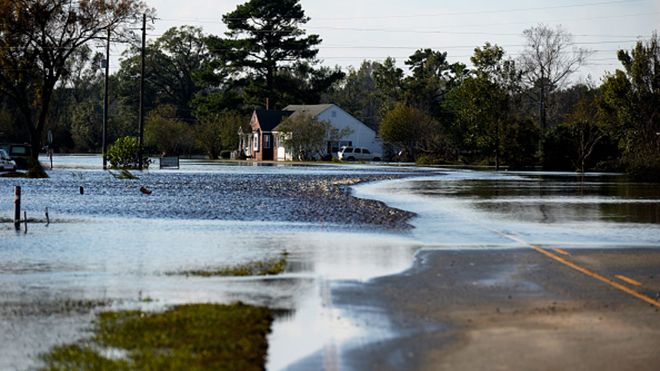In State of the Union, A Missed Opportunity on Flood Reform
As severe events increase, U.S. needs strategy to reduce costs and impacts of disasters

In his State of the Union address tonight, President Donald Trump laid out his administration’s plans to “rebuild America” through major investments in infrastructure. While repairing and upgrading roadways, broadband systems, water projects, and more is important, the president did not mention something equally vital: ensuring those investments are not washed away by major floods.
Last year President Trump issued 45 flood-related disaster declarations, affecting 31 states and three U.S. territories—from Florida and North Carolina, which was devastated by Hurricane Florence, to inland states including Iowa and Wisconsin, which suffered from spring flooding. The costs to American taxpayers from such events have been steadily rising—to over $300 billion since 2017—and the federal dollars available for flood repair and rebuilding are often spent on projects that lack the safeguards needed to withstand the next flood.
Here are three key commitments Congress and the Administration should consider to help the country rebuild better after inundations and prepare communities for the new reality of more frequent and intense floods.
- Modernize the National Flood Insurance Program (NFIP). This program is $20 billion in debt, has not been updated since 2014, and is enabling a wasteful cycle of repeatedly rebuilding the same flood-damaged properties, which further increases NFIP debt. Congress recently extended the program as is through May, presenting an opportunity for lawmakers to work in a bipartisan way to modernize it to reflect today’s understanding of flood risk to ensure communities are better prepared.
- Strengthen America’s infrastructure by making it flood-ready. Congress passed encouraging policies on flood-ready infrastructure last year, including legislation enhancing flood safeguards for Department of Defense facilities. But the need remains for a more comprehensive policy that ensures all federally funded projects are built to withstand floods. Construction that uses taxpayer dollars should incorporate smarter margins of safety, for example using flood-proofing materials and building above 100-year floodplain levels to reduce damage when the next storm hits. The president could help accomplish this through executive action or by championing legislation in Congress.
- Stop spending so much after disasters—and spend less before they strike. Our country needs long-term, stable funding for disaster mitigation, and the president already has bipartisan support to make that happen. Legislation introduced in the last Congress would establish a state revolving loan program to provide local communities and states with low-interest funding for local disaster mitigation projects. This money could be used for a variety of projects, such as buying out repeatedly flooded neighborhoods, elevating or floodproofing homes or businesses, and improving stormwater management systems.
Without a comprehensive strategy to reduce flood risk, the nation will continue to pay to repeatedly rebuild structures and infrastructure following disasters. The American people simply cannot afford to allow this pattern to continue. The president should work with Congress on sensible policies that will improve the safety of our communities and reduce the reoccurring costs of floods.
Laura Lightbody directs The Pew Charitable Trusts’ flood-prepared communities initiative.










